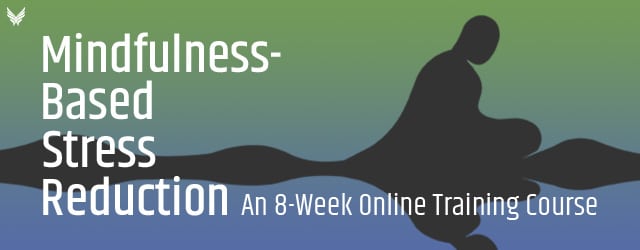What is the Absolute Best Way to Learn Meditation?
So, you have read about the many benefits of meditation and want to try it yourself. A simple google search will reveal thousands of options. Now, where do you begin?
The truth is that there is no single best option for learning meditation. Sure, having access to a skilled teacher that you can ask questions is a great boon. But what if you do not have access to such a teacher? Or if you do not know whether the type of meditation the teacher teaches suits you.
In this article, I will guide you through a three-step process that, when you complete it, gets you all set to start off successfully. It will highlight the critical decisions and actions you need to make to start learning meditation.
First step: learn what type of meditation is best for you
The first important step is finding a meditation style that suits you. The importance here is not in its definitiveness, as you can change along the way, much like I did, but in the fact that if you do not like the style of meditation, you will likely not continue very long in your practice.
And meditation is an endeavor that only gives rewards after quite some practice for many people. For others, the results come fast and are dramatic, but that is a minority; Most people need to meditate for quite some time before noticing anything.
In order to choose the meditation style you want to learn, you first need to know which ones exist. Luckily, there are only a few broad categories to choose from.
Concentration versus insight meditation
This is the most important distinction you need to know about meditation styles: is it concentration or insight based?
The truth is that, eventually, you need both to be really successful at meditation. But for you to start learning, I would spend at least a couple of weeks with one style over the other.
Concentration meditation
In concentration meditation, you focus yourself on one object to the exclusion of everything else.
The main aim of this practice is to stop all the random chatter that is in your head. So it does not matter too much which object you choose to concentrate on.
Most meditation styles include some form of concentration on the breath. It is an easy object that is always available. You might object that it is boring to watch the breath. But this is intentional. You need to get through these initial learning phases in order to strengthen your resolve and willpower. Once you pass beyond these stages, the breath actually becomes interesting and easy to follow.
Other styles of concentration meditation include loving kindness and mantra meditation. In both, you continuously repeat a word or phrase to yourself.
In loving-kindness meditation, you repeat the phrase ‘May I be well, May all living beings be well’ to yourself. This usually gives you a great feeling. It is a wonderful type of meditation.
In mantra meditation, you repeat a holy word from scripture. One that is very well known in the Tibetan tradition, is ‘Om Mani Padme Hum’. Each mantra is said to have certain magical powers. But I will let you experiment to verify if this is true. I have no opinion on the matter.
Insight meditation
In insight meditation (also called vipassana), you try to get insight into yourself or into how the world functions.
A great example of this is the modern tradition of mindfulness meditation. Here, you look with detachment at whatever is happening in your personal experience. That can be a physical sensation, an emotion, or a thought.
The aim is to gather data like a scientist would to understand oneself better. The strange thing is that by just gathering the data in this way, part of the problem disappears. Without you having to do anything else but just observing it.
That is the magic of mindfulness meditation.
There are other insight practices where you look at certain doctrinal statements. In Buddhism, you could look at the four noble truths or the three marks of existence, for instance. In these types of meditation, you investigate whether what is said by the Buddha is valid in your own life or not.
Remark that the aim is to look at whether this is true or not. The aim is not to force you to believe in anything. In meditation, the aim is always to verify for yourself. These are not dogma’s to just believe!
This also means that you are not limited to Buddhist scriptures. You can do the same for Christian or Muslim teachings. Any type of wisdom you want to verify in your own experience is a good candidate
Which is better to learn first, concentration or insight meditation?
Now, if you read this, you might think the choice you need to make is between a boring concentration meditation and the much more exciting insight meditation with the promise of gaining access to a wealth of knowledge and happiness.
The truth is that you need both types of meditation. In order to have some sort of insight, you need to have sufficient concentration. But concentration alone does not bring a whole lot of insight.
However, concentration meditation brings on pleasant states quite rapidly. So it is very motivating when your start to learn meditation. It gives you some impulse to continue.
Insight is also very rewarding, but it often involves you getting to work through negative thoughts and emotions. And, at the beginning of your journey of learning to meditate, you are not always equipped to handle these very efficiently.
So which one you take on first is a personal choice. But you should not worry as you need to learn them both anyway, and there is no golden rule as to which one you take on first.
The best way is to go on to step two and try some samples.
Further reading: What type of meditation is best for me?
Second step: Try some samples before deciding
Ok, now that you have some understanding of what types of meditation exist, we need to get our hands dirty.
Meditation is 100% practical. So you need to learn it by practicing. Reading or hearing is not enough. As for any skill, you need to do it to perfect it.
In the following sections, I link to several guided meditations on youtube for you to follow along.
I recommend that you try all of them. Just take one meditation style per day. After having completed these, choose one style that you like more and do this type of meditation for at least a week, so you know that you are indeed more drawn to this type of meditation.
Once you have completed this step, you will be ready to go one step deeper and invest in a course or a book, which will be covered in step 3.
Concentration meditation samplers
Mindfulness of breathing meditation
The first meditation for you to try is just following the breath. It goes by different names like Samatha or Anapanasati. The basic feature is that you focus on the sensations that you experience while breathing.
The instructions are to follow the in-breath and the out-breath as well as you can. Each time you forget about the breath, you just gently come back to noticing the breath. That is really all there is to this practice. It is deceptively simple, but not so easy to execute.
Have fun trying out this exercise:
Loving-kindness meditation (also called metta meditation)
Metta meditation lets you experience warm feelings of love for yourself and others. In the beginning, I was skeptical about this type of meditation, but I came to realize that it is actually a much-needed type of meditation.
We are much too harsh on ourselves and on others, and this limits our happiness potential. Opening up immediately gives us access to untapped sources of well-being.
You can learn meditation via this method quickly if you are an emotional person. It fits in perfectly.
the following guided meditation is from Tara Brach, a world-renowned meditation teacher and bestselling author of the book ‘radical acceptance‘.
Mantra meditation
In the west, the best-known type of mantra meditation is Transcendental Meditation (TM). They claim to tailor the mantra to your personality. As I have no experience with TM, I cannot comment.
What I do know, is that repeating mantras is a great way to learn how to meditate.
Once you get in the rhythm of the mantra, it can start to feel as if the mantra is taking over. You then become the observer of the mantra, more than the doer of the mantra.
And this is exactly as it is supposed to be. You can follow along with the following mantra chants of ‘Om Mani Padme Hum’. But in studying how this type of meditation works, I recommend doing the mantra without the music as well.
It is actually one of the more accessible ways of learning meditation, as you have a straightforward response when you get lost in thoughts. Usually, the mantra is lost way less than the breath, so you build up concentration faster.
Kirtan
The last form of concentration meditation is one that I only started to appreciate very recently.
It is not the best one to start learning meditation as here the danger is that you can lose the meditation quickly without you even noticing.
I am talking about singing meditation or Kirtan. However, if you use it right (and sparingly in the beginning), it is a wonderful addition to your learning activities.
I love the following video and listen to it occasionally to deepen my concentration skills.
This type of meditation is well suited for people with a devotional component to themselves.
If you like this type of meditation, I also recommend you check out my article on how to learn to meditate with music. It works with all types of music. But comes with the same caveat as for kirtan: it is not that well suited to start learning meditation but makes a great diversification of your practice.
Insight meditation samplers
There are thousands of topics to choose from for your insight meditation session.
However, the best way to learn this type of practice is through some form of mindfulness meditation.
This type of meditation has been popularised in the west by Jon Kabat-Zinn in his MBSR program.
The essence of the technique is that you start by watching your breath and then notice whatever is taking your attention away from the breath.
You being taken away from the breath is now an important piece of information about yourself: it is something that is acting in your life. Or else it would not even come up.
When we direct our attention to this distraction, we can study it. See how it makes us feel, and what emotions it conjures in us. And by doing this in a way that is accepting for whatever is coming up, we do not deceive ourselves by repressing negative thoughts and emotions.
As you can see, it takes some courage to go through with this.
I have had an anxiety disorder, and I must confess that it is sometimes daunting to look at your fear in this way.
Luckily, you do not need to look at these difficult states in order to learn to meditate in this way. You can also learn it while eating chocolate ;-).
There are many different meditations in the mindfulness tradition as well. But the one I think will help you learn and appreciate this meditation is the body scan.
In the following guided meditation, your attention is guided through the different parts of your body, and the goal is to look at what you experience without judgment. For some people, this is already a very challenging exercise.
Third step: Invest in a good book or course
The third step in learning to meditate is to deepen the insight that you have gathered so far.
By now, you should have an idea of what it is to meditate, which styles exist and which ones you prefer.
But, as I already said several times, in order to reap the many benefits of meditation, you will need to do the meditation. And you will need to do quite some amount of meditation. Ideally, you will need to meditate every day for 10 to 15 minutes.
In order to help you move forward on your road to learning to meditate, you will need some more structured help. There are many resources available. And depending on your preferences, you can either read through the material or take a course.
I started out by reading lots of books. But eventually, I decided to take an in-person course. This was one of the best decisions I ever made. First off, because there was a teacher to whom I could ask questions. Second, meditating in a group is something special. It somehow motivates you and lifts you to a higher level. But it also motivates you to do the exercises as prescribed. And this is an important aspect.
Whichever way you decide to go in your journey toward learning meditation, you will need to go beyond the basics you have learned in the few meditation exercises you have done up to now.
Below you’ll find extra tools to learn meditation. I have used all of these myself.
Books to learn meditation
Hundreds of books exist on the market for each meditation style we have seen. Most of them are excellent introductions to the art of meditation. So if you find one in your local library, it will probably do the trick.
However, if you do not have a meditation handbook and want to buy one, I have two excellent resources for you.

First off, there is ‘ The mind illuminated‘, by Culadasa. You can follow the previous link to Amazon. This book covers all there is to know about concentration meditation by using a focus on the breath.
The book takes you from an absolute beginner’s level towards the Pinnacle of meditation, being the attainment of Samatha. Samatha is a highly refined state of concentration. The book presents this part of learning meditation in a gradual way. It follows the classical Tibetan description of the path toward Samatha.
It starts from level 0, teaching you what exactly meditation is, and learning how to get into a daily routine of doing your exercises. The book also details all the difficulties you will encounter as you progress. It offers techniques for overcoming all of them.
If you prefer to learn about insight meditation, the best is to start by doing mindfulness meditation. Jon Kabat-Zinn, the inventor of mindfulness, has several great books, but none of them will really teach you to meditate. His books are better suited to read on more general and deeper aspects of mindfulness meditation.

A much better option is ‘Mindfulness: An Eight-Week Plan for Finding Peace in a Frantic World‘ by Mark Williams, one of the creators of the much acclaimed MBCT program (Mindfulness Based Cognitive Therapy).
This book takes a gradual approach. Over a period of 8 weeks, you will learn various techniques related to mindfulness meditation. The body scan is a part of this program. But many others.
This book mimics what you would learn if you attend a mindfulness course. The only downside to this book is that you need the discipline to do the exercises as they are presented. So you should not skip ahead in the next. Also, nobody will remind you to do the exercises before going to the following week. But if you are disciplined enough, this is a great resource.
Courses to learn meditation
The best way to learn to meditate is, by far, to attend a course.
Whether you follow a course online or in person, is of little importance. Both work equally well. The main advantage of an in-person course is the support you will get from the group. This is difficult to replicate online. Forums will only take you so far.
The great advantage of online meditation courses is that they are way cheaper. Usually, you can find them at half the price of an in-person course.
For the many options that exist online, I’d like you to refer to my page dedicated to this topic (see below).

However, I would like to present you the most noteworthy option on this page concerning mindfulness meditation.
It is a course that closely follows the outline of the original mbsr. The course is given by a close collaborator of Jon Kabat-Zinn. This has the advantage that you know that the teacher knows his stuff.
The course is hosted by SoundsTrue, which is a very reputable company that is specialized in everything meditation related.
If you are interested, you can get a free course sample here.
Further reading: The best online meditation courses
Featured image courtesy of Dushan Hanuska
Hi, I’m Olivier Devroede and I have been meditating seriously since 2009.
Due to the great benefits I have seen in meditating, I decided to become an MBSR trainer myself and start a blog.




